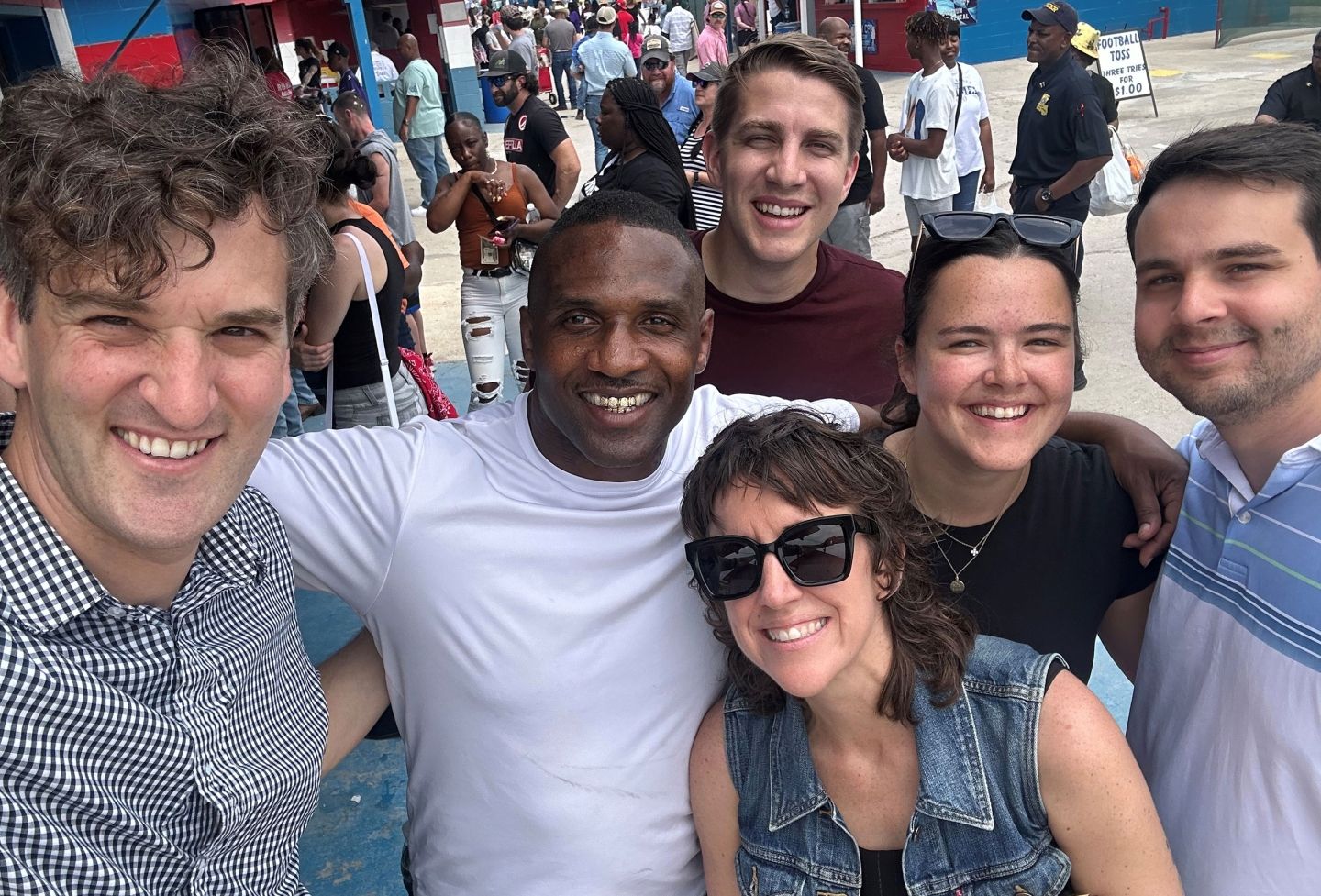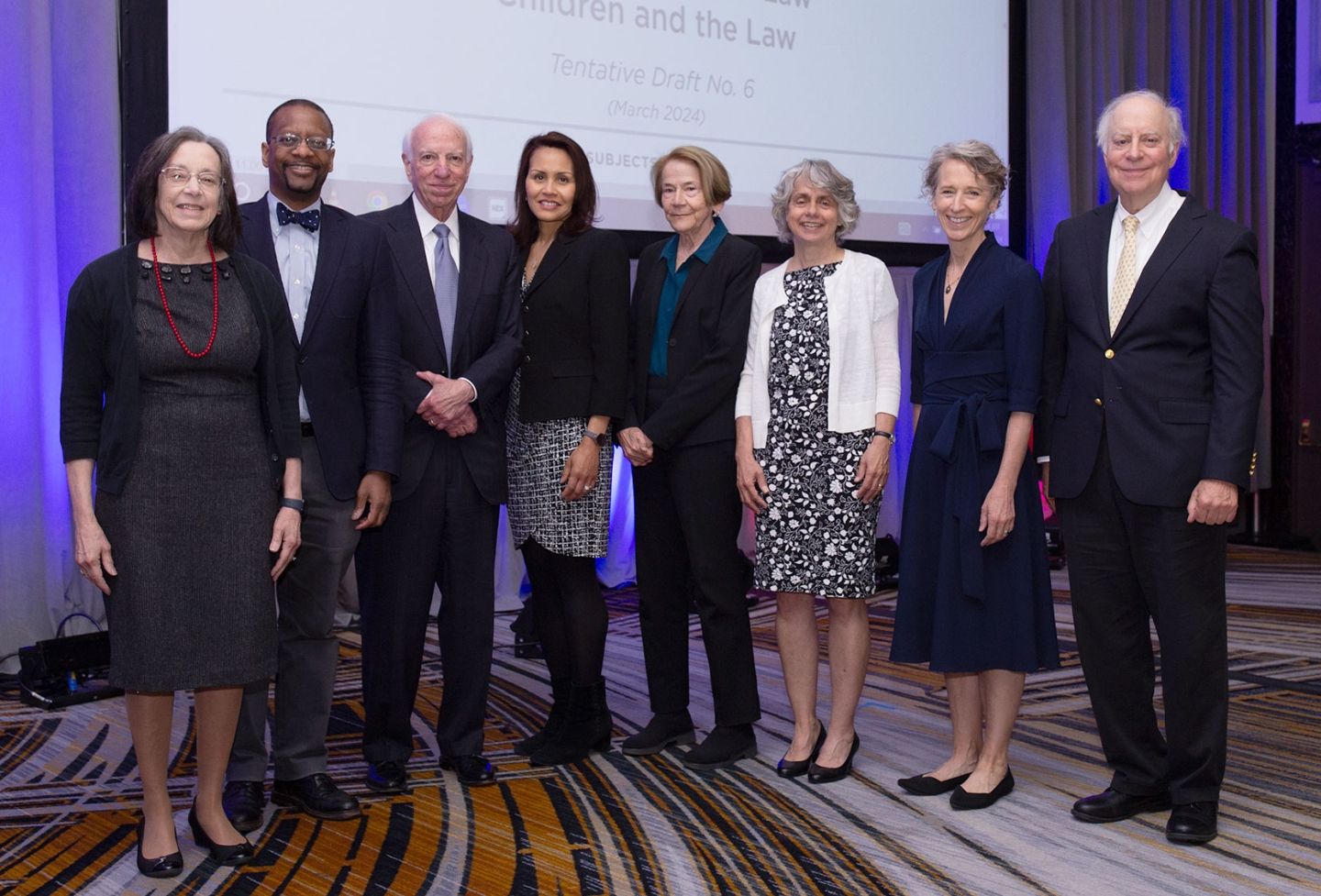Use of Extraordinary Renditions Has Changed; Risk of Torture Hasn’t, Panelists Say
 The controversial use of extraordinary renditions to interrogate or detain suspected terrorists has evolved since its first use by the United States in 1995, but the practice fails to address concerns about torture and may be ineffective in quashing terrorism, said panelists at a Feb. 16 discussion at the Law School. Moderated by JAG Legal Center and School Executive Director David E. Graham, the panel featured Michael F. Scheuer, author of the best-selling Imperial Hubris and former chief of the CIA Bin Laden Unit, and Margaret L. Satterthwaite, faculty director of the Center for Human Rights and Global Justice at the New York University School of Law.
The controversial use of extraordinary renditions to interrogate or detain suspected terrorists has evolved since its first use by the United States in 1995, but the practice fails to address concerns about torture and may be ineffective in quashing terrorism, said panelists at a Feb. 16 discussion at the Law School. Moderated by JAG Legal Center and School Executive Director David E. Graham, the panel featured Michael F. Scheuer, author of the best-selling Imperial Hubris and former chief of the CIA Bin Laden Unit, and Margaret L. Satterthwaite, faculty director of the Center for Human Rights and Global Justice at the New York University School of Law.
“Suspected terrorists are often transferred from one state to another for the purpose of arrest, detention, and/or interrogation,” Graham said. “This act of transfer itself is an act of rendition, and I say that so that you don’t…take away the idea that the word ‘rendition’ is, in and of itself, a dirty word. It’s not.”
If undertaken under the full construct of the law, as it most often is, Graham said, this process is better known as extradition. Irregular or extraordinary rendition occurs when prisoners are extradited through a process that does not afford them an opportunity to judicially challenge their transfers. Sometimes such transfers are made from the territory of the rendering state; at times, they are made from the territory of a third state, where individuals have been seized and transported directly to yet another state. These latter transfers sometimes occur with the consent of the states in which the individuals concerned have been seized; sometimes they do not.
Some reports, none substantiated, suggest that over 100 extraordinary renditions have occurred since 9/11, according to Graham. “The Bush administration has said that [it does] not engage in extraordinary rendition for the purpose of…intelligence interrogation using torture as a method,” he said. “They don’t deny that extraordinary renditions have occurred.”
Nonetheless, many critics continue to believe that these renditions are conducted in order to gain crucial information through the torturing of suspected terrorists. While the Convention Against Torture (CAT), which the United States has ratified, forbids transfers to states where there is a “substantial likelihood” that an individual will be tortured, it does not forbid transfers to locations where certain kinds of treatment that might be considered cruel, inhuman, or degrading treatment under U.S. law might occur. Nor does the CAT forbid renditions, Graham said.
“While the CAT does obligate the parties to take measures to prevent other acts of cruel and inhuman or degrading treatment [short of torture], this obligation to ‘prevent’ extends only to acts occurring within that state’s own territory,” he added. However, it is U.S. policy not to return a person involuntarily to any country when there are substantial grounds to believe that the person would be subjected to torture. U.S. regulations implementing CAT may permit the consideration of “diplomatic assurances” that torture will not occur when the United States makes rendition decisions. A U.S. official who authorizes a rendition,when provided such diplomatic assurances, would most likely not be subject to prosecution under the U.S. criminal justice system, he noted.
Satterthwaite stressed the differences between renditions and extraordinary renditions, noting that extraordinary renditions should be specifically defined. “The difference…is that an extraordinary rendition involves a transfer in the face of the risk of torture,” she said. “The reason we created this definition was so that we could [consider] it as an analytical category and talk about a set of transfers that have started to happen in the wake of 9/11.”
The development of renditions began, according to Satterthwaite, during the Reagan administration, when individuals were captured abroad and rendered back to the United States to face charges under the policy of “rendition to justice.” While there is little to no definitive evidence of the official government practice of extraordinary renditions, “we have a lot of off-the-record statements from unnamed CIA agents, from unnamed government officials” that suggests the existence of an official policy.
A leaked warning by an FBI agent in 2002 regarding the transfer of a detainee from Guantanamo Bay is a crucial piece of circumstantial evidence in trying to uncover whether extraordinary renditions are an official practice, Satterthwaite said. The agent wrote to superiors, concerned that “Category IV” interrogation techniques were being used. These methods, Satterthwaite said, were described by the agent as follows:
“Detainee will be sent off GTMO, either temporarily or permanently, to Jordan, Egypt, or another third country to allow those countries to employ interrogation techniques that will enable them to obtain the requisite information.”
“It does give the sense that there is some kind of intent to use or at least harness the capacity to have another set of interrogation techniques utilized that the U.S. government is not willing to use itself,” Satterthwaite surmised. The FBI agent was concerned about potential criminal liability if the government were to use Category IV techniques, reasoning that these practices would violate the federal anti-torture statute, she added. “There is clearly [something] going on here that is different than ‘rendition to justice’.”
The policy of obtaining diplomatic assurances, by which government officials of the receiving state promise the United States that they will not torture the suspect, is a problematic issue in Satterthwaite’s eyes. “[It’s] aimed at obviating the risk of torture,” she said, and raises many questions of good faith. Assurances are generally negotiated quietly through diplomatic channels, and they’re not judicially enforceable, she said. What’s more, “the whole context in which a diplomatic assurance arises is when there is a known risk of torture.” She questioned first whether a state where torture is systematic can be trusted to keep its promises, and secondly, “does the diplomatic agent actually have the requisite control to make sure that that form of torture does not actually occur?
“[It’s] a significant problem that I don’t think has been answered by the Bush Administration,” she said.
Satterthwaite criticized claims that the president is allowed to circumvent the normal rules according to Congress’s own authorization of military force after 9/11. In the Supreme Court’s recent decision in Hamdi, justices reasoned that the congressional authorization could be interpreted to authorize activities that are a “fundamental incident” of waging war. “Is extraordinary rendition a fundamental incident of waging war? I would argue that it’s not,” she said.
Panelist Michael Scheuer was responsible for orchestrating the first CIA terrorist rendition program in 1996. “I have to say… I’d never heard the word ‘extraordinary’ attached to rendition until the media began to use it after I resigned in November of 2004,” he said. “As far as I know, it was never used within the [CIA].”
The 1992 war in Afghanistan and the subsequent dispersal of militant Sunni fighters was an important impetus for the construction of the rendition program, Scheuer said. With Osama bin Laden’s name proliferating among the militants in the early 1990s, the National Security Council in 1995 decided to act aggressively on terrorism and pursue Bin Laden. Later that year, the first suspected terrorist, a member of the Islamic Group of Egypt, was rendered out of the Balkans.
When the CIA’s primary focus became Bin Laden and al Qaeda in late 1996, the rendition program reached its pre-9/11 heights. “[The CIA was directed] to begin breaking up al Qaeda cells around the world [and to begin] taking al Qaeda fighters off the street,” said Scheuer. “We said, ‘Yes, sir, what do you want done with these people?’ They said, ‘Well, that’s up to you.’”
Between 1997 and 9/11, the CIA developed a list of senior al Qaeda leaders and their Egyptian allies to “attack.”
“Attack meant causing them to ‘be incarcerated somewhere,’” Scheuer noted.
The rendition program aimed to incarcerate those posing a danger to the United States and to obtain information that any prisoner might have at the time of his arrest, including papers and electronic documents. The CIA located states that were willing to arrest suspects and states where detainees could be taken, and a brokering situation developed between the two.
This “limited system” becomes even more important in a post-9/11 context. “After 9/11, the process didn’t change very much, but there was greatly increased pressure inside the government to pick up more people,” Scheuer said. “They wanted victories.”
In hindsight, despite the current controversies surrounding the issue, Scheuer regards the rendition program implemented under his guidance as a worthwhile tool in the fight against terrorism. “Looking back, I think I would argue — I know I would argue — that the CIA rendition program has been the most successful [counterterrorism] program that the United States has ever conducted,” he said. “It is an entirely appropriate and essential practice for the clandestine service of the United States to conduct in the defense of America. It is also appropriate and essential, because the FBI is incompetent, and the military has other jobs to do.
“It is, however, scandalous, that the rendition program is the main U.S. counterterrorism effort….The rendition program is no more than a prick in the side of al Qaeda and the rest of these people,” he said. “We will lose if we don’t kill more of the enemy and effect at least a partial withdrawal from the Middle East.”
Although the rendition program could be run more efficiently, “the only downside of the program has been self-inflicted by the politicians in the last two administrations. Under Clinton, we captured fighters and took them to countries with poor human rights records. Under Bush, we continue to treat these people as criminals and are holding them incommunicado,” he said. Scheuer claimed that the CIA’s answer to the problem “has been all along” to treat detainees the same as POWs.
“My experience was that there was no failure on the part of the Agency to inform senior leaders in both administrations [as to] what would happen to these people if they were taken to Middle Eastern countries,” he said. Part of the reason the government doesn't want to grant POW status is simpler than what some have imagined to be a larger scheme to circumvent the law: "They're just looking for the easiest way to do things."
The panel discussion was sponsored by the Human Rights Program, The JAG Legal Center and School, and the J.B. Moore Society of International Law.
Founded in 1819, the University of Virginia School of Law is the second-oldest continuously operating law school in the nation. Consistently ranked among the top law schools, Virginia is a world-renowned training ground for distinguished lawyers and public servants, instilling in them a commitment to leadership, integrity and community service.


